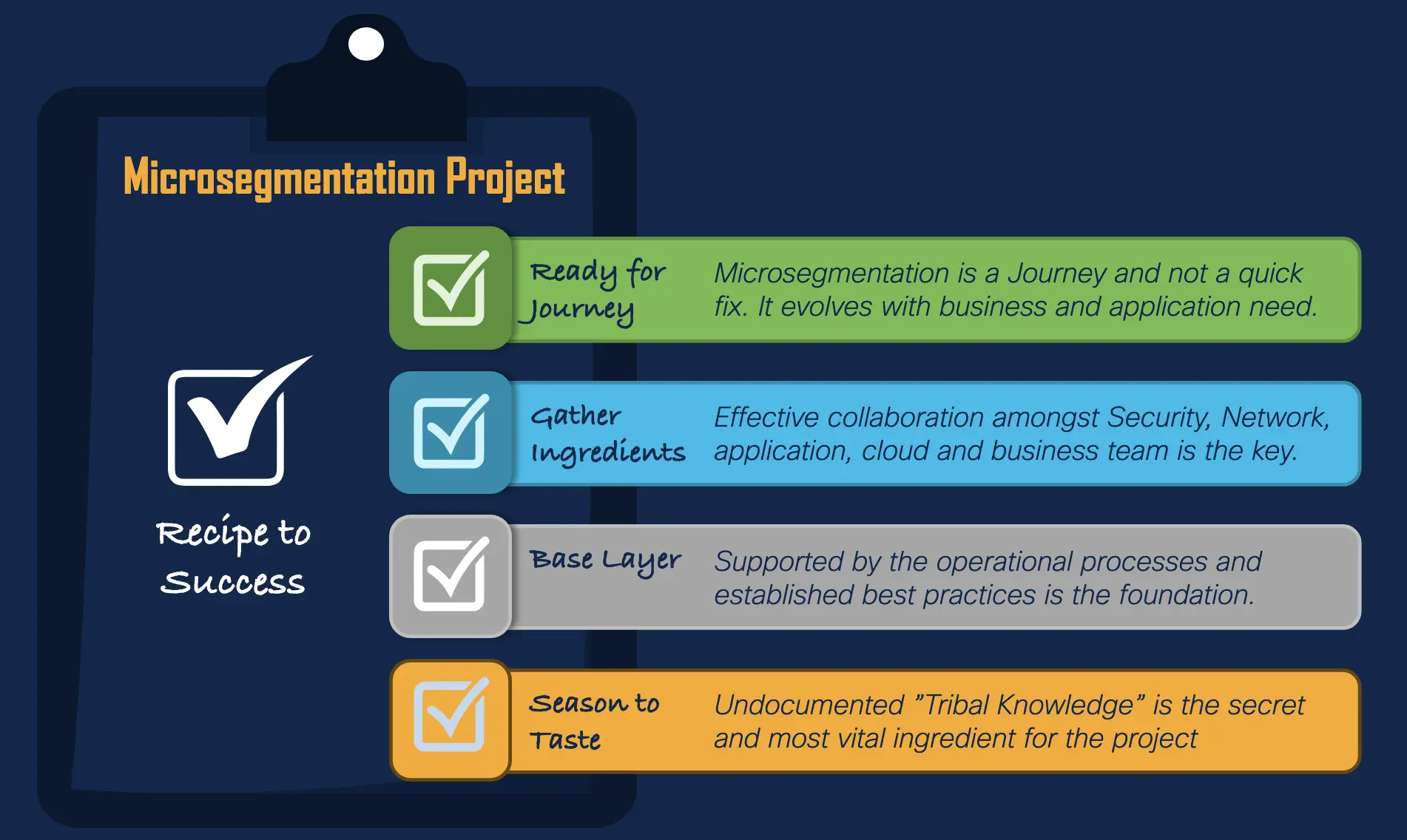
Not too long ago, during an executive briefing, I was asked a thought-provoking question by the CISO of a large airline in the US.
He asked, “Brijesh, microsegmentation solutions have existed for a decade. Based on your experience, can you tell me why so many microsegmentation projects fail, and why it is so difficult to achieve microsegmentation across hybrid IT environments?”
His question resonated deeply with me because it highlights a challenge many organizations face. Microsegmentation, despite its potential, often falls short of expectations due to a combination of factors, ranging from unclear goals to misalignment between business and technical teams.
In an era where cyber threats grow more sophisticated by the day, protecting your organization’s digital assets has never been more critical. One of the most effective strategies in this effort is microsegmentation—a way to break down your network into smaller, isolated segments, minimizing risk by controlling access at the most granular level.
But while the technology behind microsegmentation may sound complex, the real success lies not in the technology itself, but in how it’s implemented. Like any great recipe, it requires careful planning, the right ingredients and an understanding that success is a journey, not a one-time task. Here’s how to ensure your microsegmentation project is a success, without getting lost in the technical details.
As cyber threats become more complex, microsegmentation isn’t just a defense strategy — it’s a necessary move to secure the future of your business.

Attitude and approach: A journey, not a quick fix
One common pitfall is approaching microsegmentation as a tactical solution to a specific problem. While it can certainly address immediate security concerns, the real value comes when it’s seen as part of a long-term security journey.
Successful microsegmentation is not a “set it and forget it” solution. As your business grows, adapts and changes, so should your security strategies. It requires ongoing monitoring, regular adjustments and continuous alignment with your evolving business needs.
Microsegmentation is a long-term investment in your organization’s security, providing not only protecting today but also adaptability for tomorrow’s challenges.
Gathering the ingredients: Preparation is key
A successful microsegmentation project requires more than just your IT or security department — it needs a cross-functional team.
For this initiative to truly work, the project team must include voices from across the organization: IT, security, application owners, key business leaders and project sponsors. Each group brings a critical perspective:
- IT and security teams understand the infrastructure and risks.
- Application owners know which systems are essential for daily operations and how they interact.
- Business leaders ensure the initiative aligns with broader company goals and drives business value.
This cross-functional collaboration ensures that security measures are implemented in ways that protect the business while minimizing disruption. More importantly, it ensures alignment between security efforts and the business’s strategic priorities.
By understanding your organization’s operational processes, you ensure that your security measures fit seamlessly into the business without causing unnecessary disruptions.
Season to taste: Tribal knowledge — understand your business and application
Every organization has its own tribal knowledge — the deep, often undocumented understanding of how applications and systems work together. This knowledge, held by teams across the business, is critical to a successful microsegmentation project.
To ensure smooth implementation, it’s important to tap into the expertise. How do your applications interact with one another? What are the specific requirements for your business-critical systems? By bringing this knowledge into the project, you avoid disrupting essential services and ensure the right systems are protected.
Tribal knowledge is invaluable. Those who work closest to your applications can provide insights that no automated tool can, helping to shape a security approach that works for your unique environment.
Final dish: A recipe for success
In today’s rapidly evolving digital landscape, cyber threats are no longer distant possibilities — they are an everyday reality. As businesses expand their digital footprints, the potential for breaches and attacks grows exponentially. Traditional security models are no longer enough. Microsegmentation is not just a forward-thinking security measure — it’s an urgent business imperative.
The message is clear: microsegmentation isn’t optional — it’s a vital investment in the future of your organization. The cost of inaction is too high, and the risks are too great. To safeguard your business and maintain trust in the digital age, the time to act is now. The journey to microsegmentation is not without its challenges, but with the right strategy, it can serve as a powerful shield against the evolving threats of tomorrow.
In a world where security is no longer optional, microsegmentation is an essential ingredient for safeguarding the future of your business.
We’d love to hear what you think. Ask a Question, Comment Below, and Stay Connected with Cisco Secure on social!
Cisco Security Social Channels
Instagram
Facebook
Twitter
LinkedIn
Share: